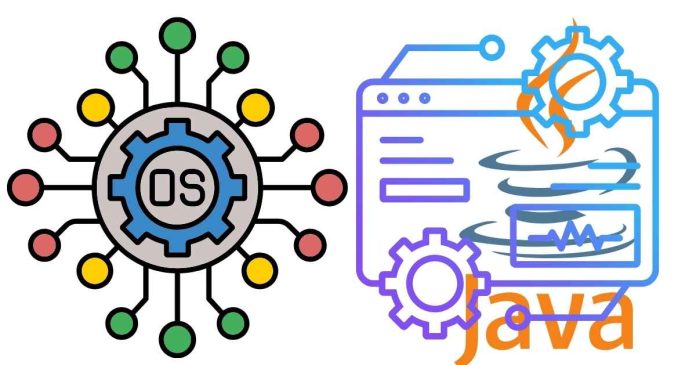In an operating system (OS), memory allocation methods are crucial for managing how data is stored and accessed in memory. These methods determine how system memory is allocated to processes, ensuring efficient memory utilization and reducing fragmentation. Different allocation techniques are used depending on the system’s requirements, including managing files on storage devices and allocating memory to running processes.
This article will delve into the key OS allocation methods, their mechanisms, advantages, disadvantages, and use cases.
What are Allocation Methods in OS?
Allocation methods are strategies used by the operating system to assign storage space to processes and files. These methods are primarily classified into two types:
- Memory Allocation Methods: For managing RAM usage by processes.
- File Allocation Methods: For managing file storage on disk drives.
Each method is tailored to optimize performance, minimize space wastage, and ensure data integrity.
File Allocation Methods
File allocation methods dictate how files are stored and accessed on storage devices like hard drives and SSDs. These methods determine the physical layout of files on the disk.
1. Contiguous Allocation
In this method, a file is stored in a sequence of contiguous blocks on the disk.
Mechanism
- A single contiguous block of memory is allocated to a file.
- The starting block and the length of the file are recorded in a file allocation table.
Advantages
- Simple to implement.
- Fast access due to sequential block arrangement.
Disadvantages
- Leads to external fragmentation, as continuous blocks may not always be available.
- Difficult to resize files since adjacent blocks might already be occupied.
Example
Suppose a file requires 5 blocks of memory, starting from block 10. It will occupy blocks 10, 11, 12, 13, and 14.
2. Linked Allocation
In this method, a file is stored as a linked list of disk blocks.
Mechanism
- Each block contains a pointer to the next block in the sequence.
- The file’s starting block is stored in a file allocation table.
Advantages
- Eliminates external fragmentation.
- Allows easy file resizing, as blocks need not be contiguous.
Disadvantages
- Slower access time due to pointer traversal.
- Risk of pointer corruption, which can make the file inaccessible.
Example
If a file spans blocks 2, 5, and 7, block 2 will contain a pointer to block 5, and block 5 will point to block 7.
3. Indexed Allocation
In indexed allocation, an index block is used to store pointers to all the file’s data blocks.
Mechanism
- A single index block holds pointers to all other blocks of the file.
- The index block itself is stored in the file allocation table.
Advantages
- Fast random access since the index provides direct pointers to data blocks.
- Avoids fragmentation issues.
Disadvantages
- Overhead of managing an index block.
- Limited by the size of the index block.
Example
If a file requires three blocks (5, 8, and 12), the index block will store pointers to these blocks.
Memory Allocation Methods
Memory allocation methods determine how RAM is distributed among processes. The two primary types are contiguous and non-contiguous allocation.
1. Contiguous Memory Allocation
This method allocates a single contiguous block of memory to each process.
Mechanism
- Processes are allocated memory in continuous memory locations.
- The OS maintains a list of free and occupied memory spaces.
Advantages
- Simple to implement.
- Efficient access due to sequential memory layout.
Disadvantages
- Internal Fragmentation: Wasted memory within allocated blocks.
- External Fragmentation: Free memory scattered across different areas.
Example
If a process requires 4 MB of memory, it is allocated a continuous 4 MB block in RAM.
2. Paging
Paging is a non-contiguous allocation method where memory is divided into fixed-sized blocks called pages.
Mechanism
- Logical memory is divided into pages, and physical memory is divided into frames of the same size.
- A page table maps logical pages to physical frames.
Advantages
- Eliminates external fragmentation.
- Allows efficient utilization of physical memory.
Disadvantages
- Overhead of managing the page table.
- May cause internal fragmentation.
Example
If a process requires 6 KB and page size is 4 KB, two pages are allocated (occupying 8 KB in total).
3. Segmentation
Segmentation divides memory into variable-sized segments based on the program’s logical divisions, such as functions or data structures.
Mechanism
- Each segment has a base and a limit.
- The segment table maps logical segments to physical memory locations.
Advantages
- Matches the logical structure of programs.
- Supports dynamic memory allocation.
Disadvantages
- Can lead to external fragmentation.
- Complex to manage compared to paging.
Example
A program may be divided into segments like code, data, and stack, each allocated to different memory regions.
Comparison of Allocation Methods
| Method | Advantages | Disadvantages | Use Case |
|---|---|---|---|
| Contiguous Allocation | Simple and fast access | Fragmentation issues | Real-time systems, simple file systems |
| Linked Allocation | No external fragmentation | Slower access and pointer overhead | Sequential access files |
| Indexed Allocation | Fast random access | Index block overhead | Large files with frequent random access |
| Paging | Eliminates external fragmentation | Overhead of page table management | Virtual memory systems |
| Segmentation | Matches program structure | Fragmentation issues | Programming environments, compilers |
Allocation methods in operating systems are designed to optimize resource usage and ensure smooth execution of processes and file management. Each method has its strengths and weaknesses, and the choice of method depends on the specific requirements of the system, such as speed, memory utilization, or ease of implementation.
By understanding these methods, developers and system administrators can make informed decisions to enhance system performance and reliability.


